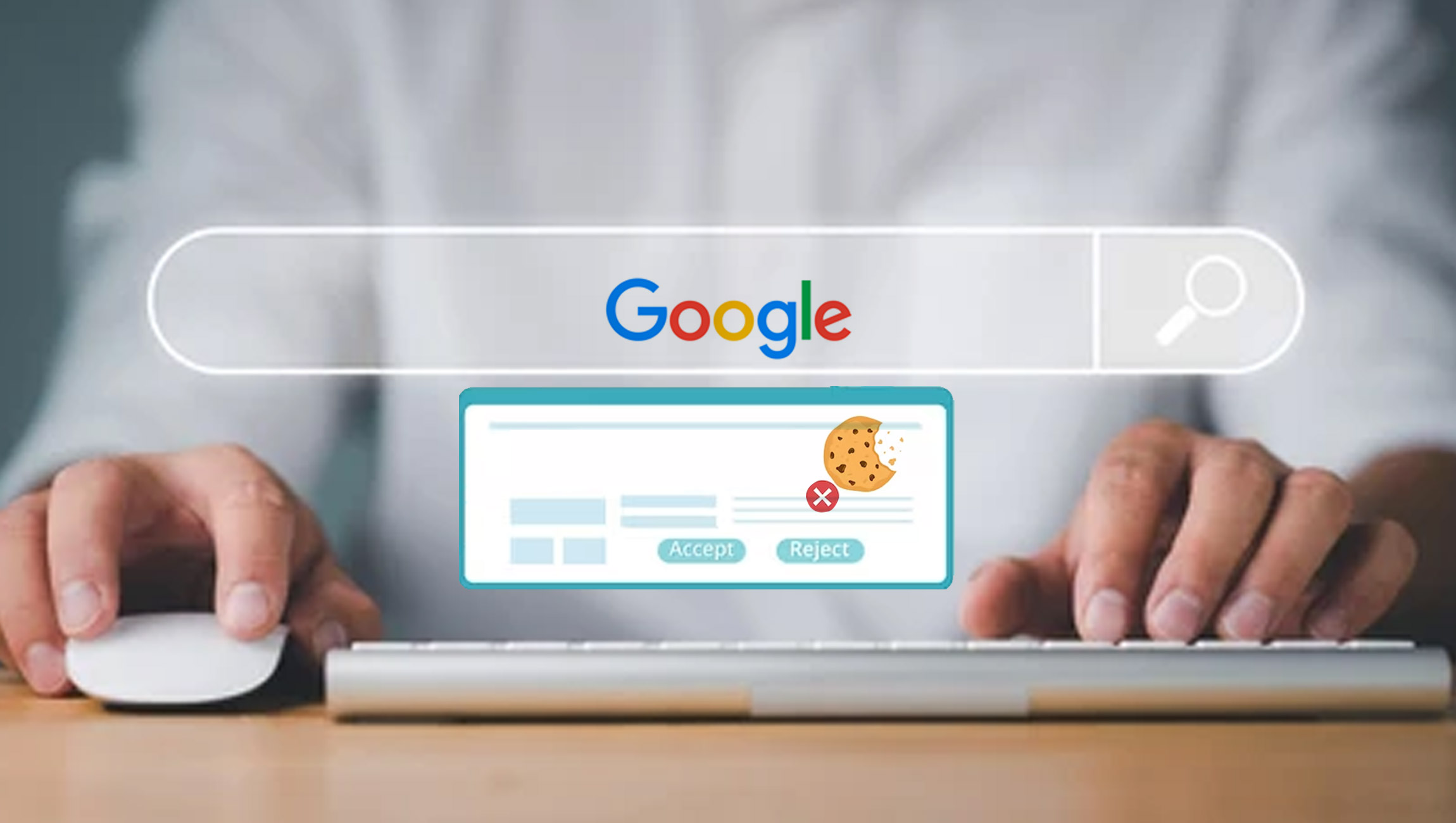What exactly are third-party cookies?
Third-party cookies, originating from a domain unrelated to the user’s visited site, serve the purpose of identifying users across diverse websites and crafting profiles for the delivery of highly personalized ads tailored to their interests, visited sites, and online behavior.
The challenge posed by third-party cookies lies in users having limited control over the data these cookies capture and share. Users lack visibility into the entities processing their data and the instances of being tracked across the internet. With increasing concerns about internet privacy prompting regulatory considerations, marketers must establish transparent standards for user privacy. It is essential to explore improved methods of collecting user data that prioritize transparency and align with evolving privacy expectations.
Google’s decision on phasing out third-party cookies
On January 4, 2024, Google initiated the first phase of eliminating third-party cookies, impacting around 1% of Chrome users globally, or approximately 30 million people. This gradual rollout is designed to allow advertisers, publishers, and ad-tech firms to adapt to a fully cookie-less Chrome by year-end. Google’s move, after multiple delays, follows Safari, Apple, and Firefox in cookie deprecation.
As part of this shift, Google plans to introduce privacy-focused alternative technologies for advertisers. The tracking protection feature automatically restricts a website’s access to third-party cookies. Google Vice President Anthony Chavez emphasized a responsible approach, allowing users to temporarily re-enable third-party cookies for sites facing compatibility issues.
While Google’s initial 2020 announcement faced delays, the subsequent rollout has raised concerns in the advertising industry. The Privacy Sandbox, intended to replace third-party cookies, has sparked skepticism about its effectiveness, potentially strengthening Google’s dominance in online advertising.
Publishers, heavily reliant on granular data from third-party cookies for personalized ads and revenue maximization, are wary of Google’s replacements. Privacy Sandbox and similar alternatives pose uncertainties regarding targeting accuracy and revenue generation.
Amid these changes, the industry explores cookie-less alternatives like contextual targeting, geo/location-based targeting, and first-party data, prioritizing privacy. AI and machine learning play a crucial role in analyzing user behavior patterns without relying on individual user-level data, ensuring more privacy-centric targeting.
The transition to a privacy-respecting online advertising landscape is an ongoing process, presenting challenges. However, fostering open dialogue and collaboration can guide the industry towards a future where targeted advertising coexists with user privacy.
Why is this happening now?
Google’s phase-out of third-party cookies in Chrome isn’t just happening “right now”; it’s been a long and intricate process that unfolded over several years, driven by a confluence of factors:
- Growing Privacy Concerns: Public awareness and concern about online privacy reached a tipping point in the past decade. Third-party cookies, with their ability to track users across websites and build detailed profiles, became a symbol of this invasive data collection. The Snowden leaks and various data breaches further fueled these concerns.
- Regulatory pressure: Data privacy regulations like GDPR in Europe and CCPA in California forced tech companies to re-evaluate their data practices. These regulations imposed stricter limits on data collection and user consent, making third-party cookies increasingly untenable.
- Shifting Public Sentiment: Consumers became more vocal about their desire for control over their online data. Google, as a major player in the online landscape, couldn’t ignore this shift and needed to adapt to meet changing public expectations.
- Evolving Advertising Landscape: While targeted advertising based on third-party cookies was dominant, newer trends like contextual targeting and first-party data strategies emerged. Google saw an opportunity to develop new, privacy-first solutions that could still be effective for advertisers.
- Internal Motivations: While Google often gets critiqued for its dominance, the cookie phase-out can also be seen as a strategic move. By developing the Privacy Sandbox as the post-cookie solution, Google aims to maintain its leading position in the online advertising market.
- Gradual Rollout: It’s important to note that the complete phase-out started in January 2024, with limitations on third-party cookies initially affecting only 1% of Chrome users worldwide. This gradual approach allows for testing and refinement of Privacy Sandbox solutions before a full rollout later in the year.
What does this mean for brands?
For brands, Google’s phasing out of third-party cookies in Chrome carries a mix of challenges and opportunities:
Challenges:
- Less precise targeting: Brands will lose the ability to track individual users across websites and build detailed profiles for hyper-targeted advertising. This could lead to a decrease in ad effectiveness and higher advertising costs.
- Shift to contextual targeting: Brands will need to adapt to targeting ads based on the context of the website or app where they appear, rather than individual user profiles. This requires a deeper understanding of audience segments and content strategies.
- First-party data becomes crucial: Building and leveraging first-party data, collected directly from customers with their consent, becomes critical for personalized marketing and advertising campaigns. Brands need to invest in strategies to collect and utilize this data effectively.
- Competition for attention: With less personalized ad experiences, brands need to focus on creating compelling content and engaging marketing campaigns to grab user attention organically.
- Measurement and attribution difficulties: Measuring the effectiveness of ad campaigns will become more complex due to the lack of individual user tracking. Brands need to adopt new attribution models and metrics to gauge the success of their marketing efforts.
Opportunities:
- Focus on building trust and transparency: The cookie-less future is an opportunity for brands to build stronger relationships with consumers by prioritizing trust and transparency in data practices.
- Embrace contextual targeting: Contextual targeting, when done right, can reach relevant audiences based on their interests and activities. Brands can explore innovative content partnerships and contextual ad formats to reach their target demographics.
- Invest in customer relationships: First-party data and customer relationship management (CRM) become key assets. Brands can build stronger relationships with consumers through personalized email marketing, loyalty programs, and exclusive content offerings.
- Focus on creativity and content: Engaging brand storytelling and high-quality content become essential for attracting and retaining customer attention organically.
- Explore new measurement tools: Several privacy-preserving measurement solutions are emerging. Brands can stay informed and test new attribution models to track the effectiveness of their campaigns.
Marketing Technology News: MarTech Interview with Sejal Amin, Chief Technology Officer at Shutterstock
How to prepare
Stay calm in the face of the evolving landscape. Marketers, advertisers, and data engineers are actively seeking solutions amid the changing dynamics, especially with the weakened influence of third-party cookies due to Safari and Firefox ad blocking. It’s evident that these cookies may no longer be the strongest advertising tool. As a marketer, staying informed about developments related to third-party cookies and data privacy is crucial.
Given the scenario, compliance with data privacy regulations is paramount. Utilizing tools such as a cookie consent manager can automate the process of scanning your site, classifying cookies, and presenting users with a customizable cookie banner.
For those heavily reliant on third-party data in advertising strategies, it’s time to explore alternatives. Keep abreast of the evolving situation and vet software solutions that facilitate a smoother transition away from third-party cookies. Strategies involving the effective use of first-party data can also be considered as part of this adaptive approach.
Things to know about cookie phase-out & privacy pivots
1. Google is not banning all cookies.
Before you worry that your marketing strategies reliant on cookies will become outdated, pause for a moment. Google’s plan, as of now, is focused on phasing out third-party cookies exclusively on its browsers. The good news is that first-party cookies, which gather fundamental data about visitors to your own website, are unaffected.
In Google’s 2021 announcement, they emphasized the importance of first-party relationships, considering them vital. Consequently, any first-party data acquired from visitors to your website across all browsers will remain intact despite the changes in the third-party cookie landscape.
2. It is a predicted phenomenon.
The demise of third-party cookies in Chrome wasn’t an overnight surprise. For years, whispers of its inevitable fall grew louder. Public outcry over online privacy, stringent data protection regulations, and the emergence of alternative advertising approaches like first-party data and contextual targeting all foreshadowed its decline. Even Google, with its own motives for maintaining control over the advertising landscape, made subtle moves like DevTools restrictions and Privacy Sandbox discussions. So, while the exact timing caught some off guard, the writing was on the wall, penned by privacy concerns, regulation, and a shifting technological landscape. This realization is crucial for navigating the cookie-less future, as it highlights the need for brands to adapt and embrace new strategies to succeed in a privacy-conscious world.
3. Marketers are confused
Cookie phasing out no-doubt is going to be the concern for many marketers, brands, and B2B organizations, but what’s not letting them sleep is the aggressive decision about eliminating the cookies. In the absence of Chrome-based third-party cookie data, Google Ads can still be leveraged using Google Chrome’s first-party cookies and Privacy Sandbox tools. However, ad software and platforms reliant on third-party data, without Chrome’s support, will face significant challenges. Concerns are raised about Google’s motivation behind phasing out third-party cookies, with questions about whether it aims to enhance user privacy or strengthen its dominance in the ad market. Marketers, including industry associations, express worry over potential disruptions and call for a delay in Google’s third-party cookie “moratorium” until viable alternatives are provided.
4. Google will keep tracking.
Google commits to avoiding technology that tracks individuals, opting for alternatives. The Privacy Sandbox and successful results from FloC, a technology that tracks groups instead of individuals, demonstrate this shift. Ongoing tests show FloC’s effectiveness in removing third-party cookies from advertising by anonymizing individuals within interest-based groups. Chrome plans public testing of FLoC-based cohorts in its next release and advertiser testing in Q2. User controls for FLoC will debut in April, with expansion in subsequent releases, emphasizing Google’s responsiveness to user and industry feedback during origin trials.
5. Opening the doors for innovation & advertising
For marketers embracing innovation, constant self-questioning is essential. It involves considering whether excessive reliance on existing technology exists and contemplating potential scenarios if regulatory measures impact current strategies. The mark of innovation lies in devising inventive alternatives and advertisements that resonate with broader audiences, moving beyond hyper-targeted content and intrusive pop-ups.
A promising avenue for innovation lies in reimagining how data is leveraged. As mentioned earlier, data management platforms are actively developing alternative tools to enable advertisers to extract optimal value from third-party cookie limitations. While these alternatives may deviate from traditional third-party cookie solutions, they present opportunities for novel strategies, allowing targeted outreach and audience insights without compromising user privacy.
A glance at the significant timeline to understand the slow phasing- out (Source: Gartner)
- 2016: The European Union adopts the General Data Protection Regulation (GDPR), requiring websites to get explicit user consent before tracking them with cookies.
- 2017: Apple’s Safari announces intelligent tracking prevention (ITP) to block third-party cookies.
- 2019: Firefox launches enhanced tracking protection (ETP) and later announces it will block all third-party cookies by default.
- 2019: Safari announces ITP v2.1 to block all third-party cookies by default.
- 2020: Google declares a plan to make third-party cookies obsolete by 2022.
- 2021: Google announces restricted use of Android IDs by the end of 2021.
- 2023: Revised end-of-year deadline to phase out third-party cookies in Chrome.
Conclusion
The era of third-party cookie data, a longstanding force in digital advertising, is fading away. While this shift is set to disrupt the marketing landscape, it also presents an opportunity for marketers to reconsider and reshape alternatives that enhance the overall experience for both users and advertisers.
Marketing Technology News: How to Get Seven Weeks of Additional Productivity Each Year Without Working One More Day.
______











